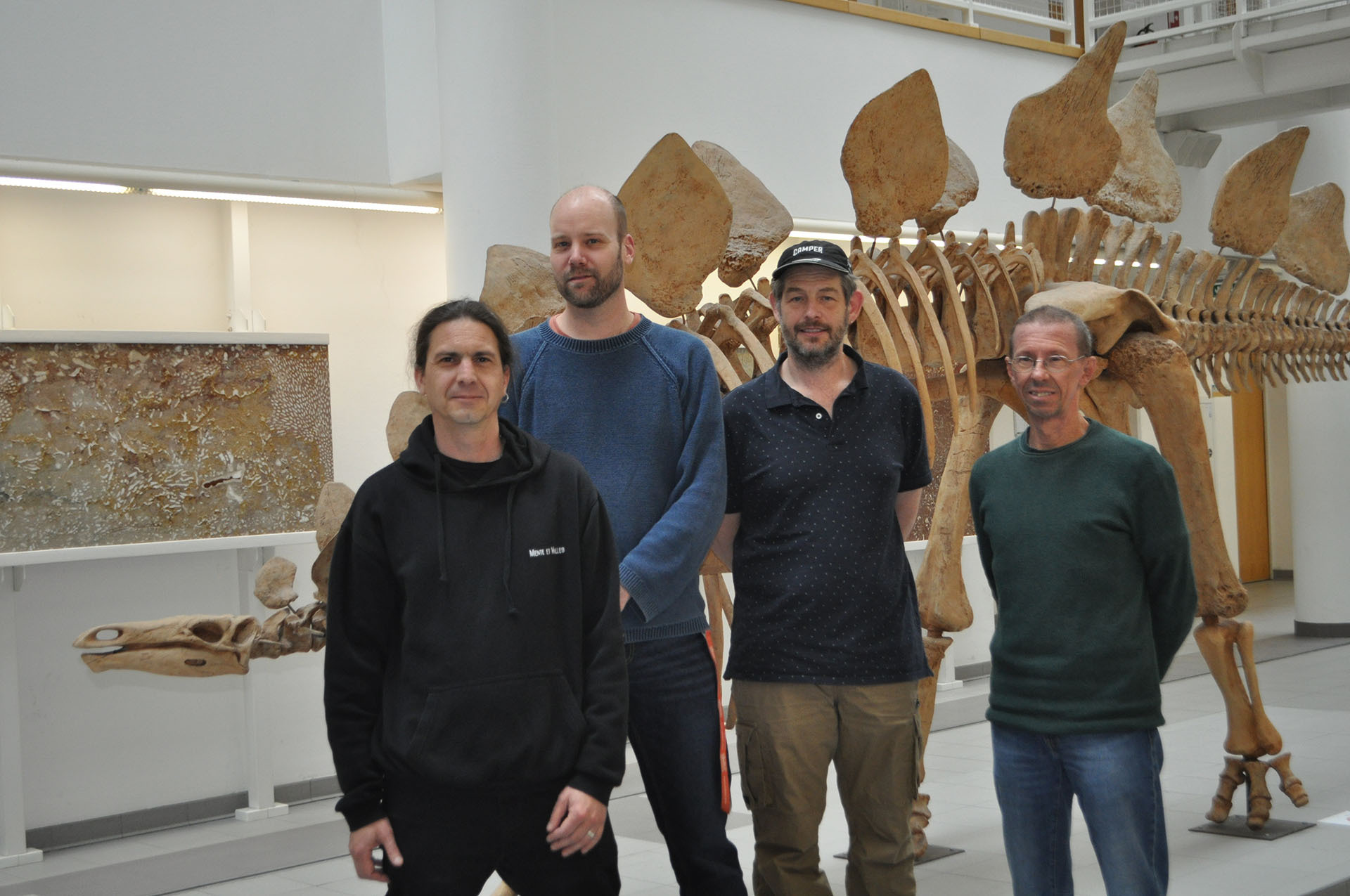ITASCA Congratulates the Winners of the 2024 PETER A. CUNDALL AWARD
6th International ITASCA Symposium

For the 6th International ITASCA Symposium, ITASCA is pleased to congratulate Martin P.J. Schöpfer1, Mario Habermüller1,2, Nicola Levi1,2, and Kurt Decker1 for their extended abstract "Rigid Body Spring Network Models of Drilling-induced Tensile Fractures," which has been selected as the winner of the 2024 PETER A. CUNDALL AWARD. Dr. Schöpfer will present their work as a keynote lecturer during the Symposium in Toronto.
From their extended abstract: “Discrimination of drilling-induced tensile fractures (DITFs) from natural fractures or from induced hydraulic fractures can be difficult due to ambiguous geometric signals in borehole image logs. Misinterpretation of such features can cause serious errors in the characterization of fractured reservoirs, as well as in the calibration of geomechanical models. Hence, understanding the mechanics of DITF formation, the resulting fracture geometry and their continuation into the far-field is of vital interest for subsurface characterization. This study presents new insights into induced fracture geometries and fracture mechanics based on 3D numerical simulations.”
Thank you to all authors who submitted an extended abstract. All extended abstracts will be published on ITASCA’s websites following the Symposium.
1Department of Geology, University of Vienna, Austria
2NiMBUC Geoscience, Vienna, Austria
Honorable Mentions
In recognition of their outstanding work, ITASCA is also awarding honorable mentions to the following extended abstracts:
“Analyzing the Effect of Continuous Miner Parameters on Fine Particle Generation: A Case Study in a Salt Mine”
Behzad Mehrgini and Kamran Esmaeili
Department of Civil & Mineral Engineering, University of Toronto, Toronto, ON, Canada
From their extended abstract: “Optimizing the rock fragmentation process and minimizing the fine particle generation requires a thorough understanding of the effects of various parameters on the rock-cutting process. Thus, this study investigated the impact of several parameters, including cutting depth and bit condition (new vs. worn bits), on fine generation through numerical simulation using ITASCA’s PFC2D software.”
“Application of the CWFS method in FLAC2D to model brittle failure around the Qirehataer Diversion tunnel.”
Fernando Gómez, Andrew Corkum, and Navid-Bahrani
Department of Civil & Resource Engineering, Dalhousie University, Halifax, Canada
From their extended abstract: "This study explores the use of the CWFS (cohesion weakening friction strengthening) method in FLAC2D for the analysis of brittle failure around the Qirehataer Diversion Tunnel in western China, utilizing Walton’s CWFS modeling guidelines. Following these guidelines and adjusting the input parameters, the simulation results are compared with field observations of the depth of failure to assess the effectiveness of the CWFS method in FLAC2D."
The PETER A. CUNDALL AWARD
The PETER A. CUNDALL AWARD is presented to the best overall Extended Abstract at an ITASCA Symposia. A medallion and certificate and award is presented to each author and they are invited to present one of the Symposium keynote addresses. Honorable mentions may also be recognized.
The winner is selected by an ITASCA committee, including Dr. Cundall, based on recommendations by the Symposium Technical Committee. Employees of ITASCA International do not qualify.
Dr. Cundall was instrumental to the conceptualization and development of ITASCA's FLAC, FLAC3D, UDEC, 3DEC and PFC software. Dr. Cundall performed his doctoral work at Imperial College, London, where, in 1971, he originated the Distinct Element Method for modeling jointed rock and granular material. In addition to being an independent consultant for several years, he worked for Dames and Moore for five years, was a faculty member at the University of Minnesota for seven years at which he is now Adjunct Professor. He was employed by ITASCA for more than 20 years, and remains an Associate with ITASCA. Dr. Cundall is a Fellow of the Royal Academy of Engineering and Member of the National Academy of Engineering.
